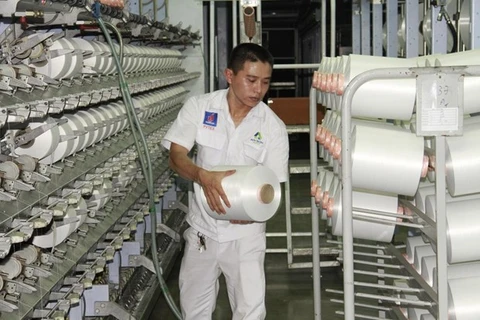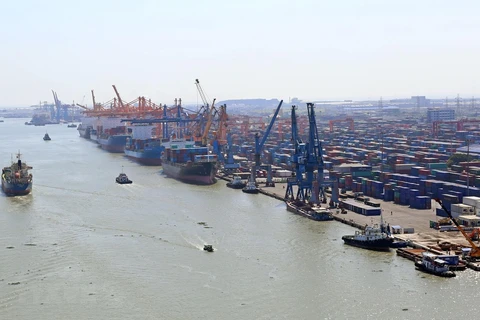After receiving Quy Nhon Port, Vietnam National Shipping Lines (Vinalines) will continue to maintain growth while pouring capital into infrastructure, focusing on improving loading and unloading capacity, upgrading storage system and dredging shipping routes.
VietnamPlus had an interview with Mr. Pham Anh Tuan, Deputy General Director of Vinalines and Chairman of the Board of Management of Quy Nhon Port Joint Stock Company.
- Vinalines has taken over Quy Nhon Port. How did that process work?
Mr. Pham Anh Tuan: Implementing Conclusion 1566 by the Government Inspectorate and the direction of the competent authorities, Vinalines has actively worked with the investor, Hop Thanh Company, to unify the contents related to the transfer of 75.01 percent of charter capital of Quy Nhon Port to the State.
At the end of May, Vinalines became a major shareholder, holding 75.01% of Quy Nhon Port and officially having the right to manage and operate the port at the General Meeting of Shareholders on June 29.
After receiving the right to manage and operate the port, Vinalines has consolidated the key leadership of Quy Nhon Port, including changing all members of the Board of Directors, the Control Board and the General Director.
For the current operation apparatus, Vinalines will remain unchanged, but in the coming time, a consultant will be hired to re-evaluate.
On that basis, Vinalines continues to strengthen and improve the organizational structure of the Company such as rebuilding appropriate functions and tasks, streamlining the apparatus, improving the quality of corporate governance; reviewing and arranging of the use the workforce appropriately, ensuring the efficiency in the company's labor management.
- Quy Nhon Port has great potentials when it is located at a favorable location for goods transport among regions. What are difficulties facing the port after transferred?
Mr. Pham Anh Tuan: Quy Nhon Port belongs to the south central seaport group. It is a national general port, the nearest gateway to the sea through the East-West economic corridor of countries in the Greater Mekong Sub-region, serving socio-economic development needs of the South Central region and Central Highlands.
Besides, the port is located close to the international maritime route so it is very convenient for foreign ships’ cargo shipment. In particular, ships from Quy Nhon Port can go directly to major seaports in Asia.
 Mr. Pham Anh Tuan, Deputy General Director of Vinaline and Chairman of Quy Nhon Port. (Photo: Viet Hung / Vietnam +)
Mr. Pham Anh Tuan, Deputy General Director of Vinaline and Chairman of Quy Nhon Port. (Photo: Viet Hung / Vietnam +) After equitization, the average revenue of Quy Nhon port reached 552.3 billion VND per year, an increase of nearly 47.47 percent compared to the period before equitization (only 374.5 billion VND per year).
Based on the scale of port expansion approved, Vinalines will consider investing more capital into Quy Nhon port to improve its competitiveness, operational efficiency, contributing to socio-economic development of the locality and the region.
- Thank you./.
























